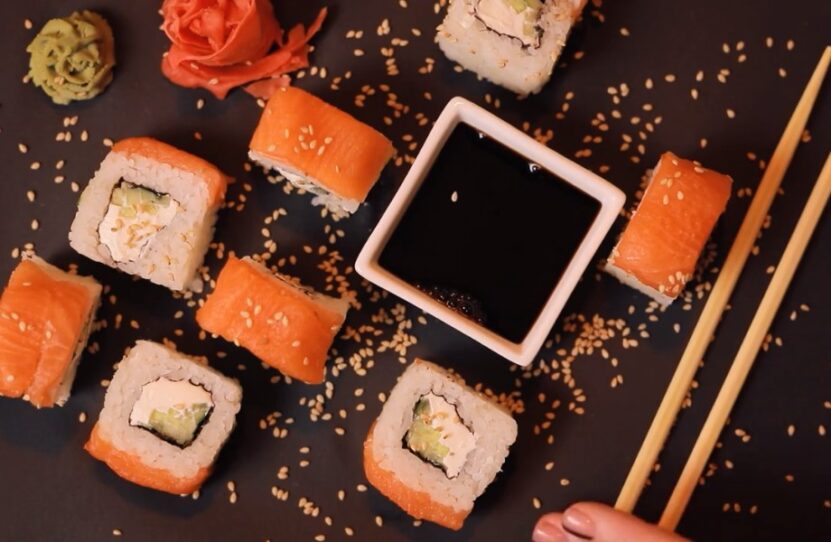Get your chopsticks ready for a sushi showdown! It’s time to dive into the vibrant world of sushi, specifically to compare two beloved favorites – the California Roll and the Alaska Roll. Whether you’re a sushi newbie or a seasoned connoisseur, this comparative deep dive will whet your appetite and expand your culinary horizons.
The All-American: California Roll
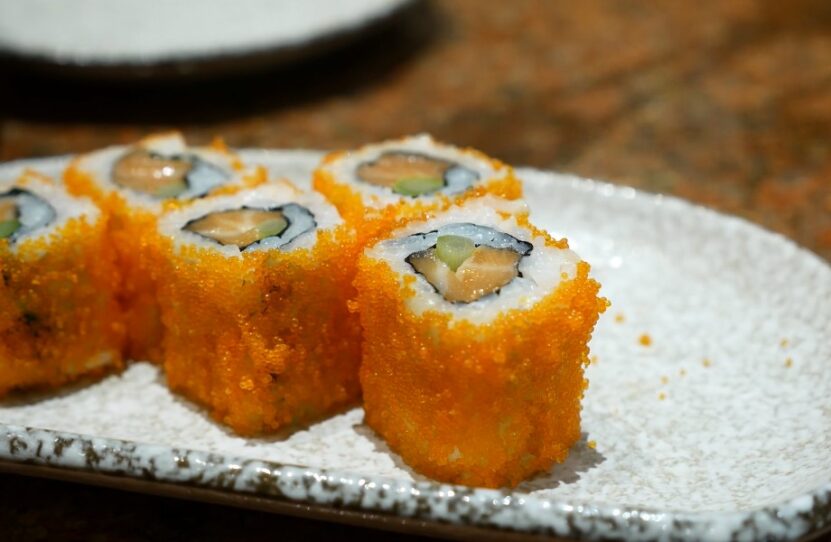
The California Roll is undoubtedly the most popular sushi roll in the United States, perhaps even in the world. Ironically, though sushi originated in Japan, the California Roll was born not in the Land of the Rising Sun but in the Golden State of California.
In the 1960s, sushi chef Ichiro Mashita at Tokyo Kaikan restaurant in Los Angeles started substituting avocado for traditional toro (fatty tuna), which was difficult to source. The resulting roll, featuring crab, avocado, and cucumber, eventually evolved into the California Roll we know today. It’s a classic inside-out roll, meaning the rice is on the outside, wrapped around a core of the other ingredients, all encased in a thin layer of nori (seaweed).
Why has the California Roll achieved such iconic status? The ingredients are universally accessible and appealing, making it an excellent gateway for sushi newcomers. It’s a gentle introduction to the sushi world – no raw fish, just a perfect blend of creamy avocado, crunchy cucumber, and sweet imitation crab, all hugged by seasoned rice and subtly flavored nori.
The Chilly Challenger: Alaska Roll
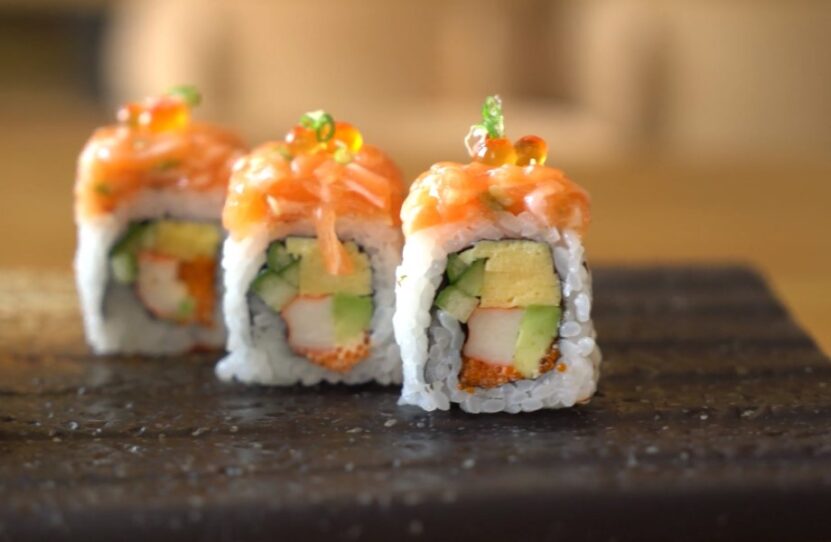
The Alaska Roll, a less famous but equally delightful sushi option, has a flavor profile as fresh and cool as the state it’s named after. Like the California Roll, it also has its roots in American culinary innovation rather than traditional Japanese cuisine.
The star ingredient in an Alaska Roll is salmon, which could be raw (sashimi-grade) or smoked. Combined with avocado and cucumber, it’s then wrapped in a sheet of nori and sushi rice. The salmon gives this roll its distinct flavor profile, a delightful blend of the fish’s richness complemented by the buttery texture of avocado and the crispness of cucumber.
The Alaska Roll has a robust and more oceanic flavor profile, thanks to the salmon. It’s an excellent choice for sushi lovers ready to venture into eating raw fish if they haven’t already. Moreover, salmon is a nutritional powerhouse, loaded with omega-3 fatty acids, high-quality protein, and an array of vitamins and minerals.
Side by Side: Taste and Texture
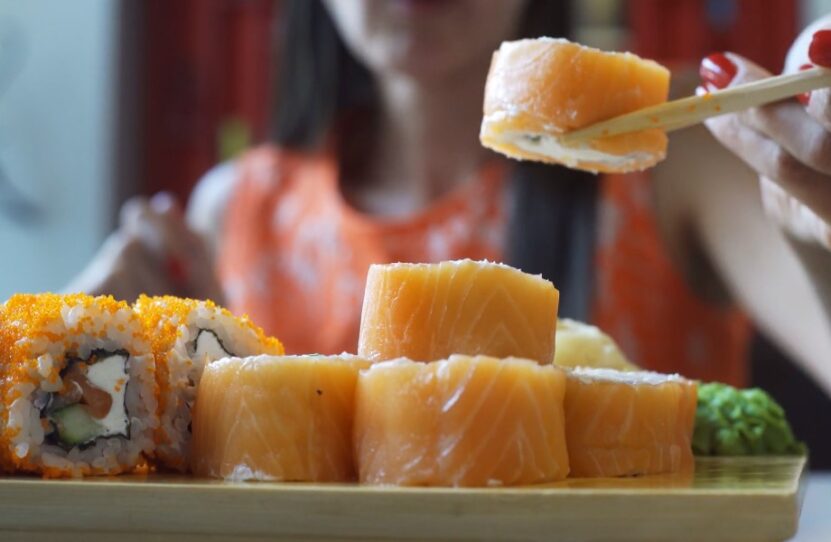
Now that we’ve dissected each roll’s ingredient line-up let’s explore the taste and texture differences that set these rolls apart.
The California Roll shines in its delicate balance of flavors and textures. The cucumber provides a crunch that contrasts beautifully with the creamy avocado and the smooth, almost sweet imitation crab. There’s a mildness to the California Roll that makes it incredibly approachable, but it is in no way bland. The seasoned rice and nori add depth, giving you that essential umami flavor that sushi lovers crave.
The Alaska Roll, on the other hand, features the distinctive taste of salmon. Whether raw or smoked, the salmon introduces a robust, sea-fresh flavor and a more complex taste experience. The buttery avocado and crunchy cucumber are familiar friends, but the salmon elevates the Alaska Roll to new heights. It’s a bolder option yet still maintains a delicate balance of flavors that is the hallmark of great sushi.
Nutritional Showdown
When it comes to nutrition, both rolls have their merits. The California Roll, with its imitation crab, avocado, and cucumber, is relatively low in calories (around 250-300 for six pieces), with a good balance of protein, healthy fats, and carbohydrates.
The Alaska Roll tends to be slightly higher in calories due to the salmon’s fat content. However, these are mainly healthy fats, including omega-3 fatty acids, which have numerous health benefits, from heart health to brain function. Six pieces of an Alaska Roll might clock in around 300-350 calories.
Both rolls contain sushi rice, which is mixed with a vinegar solution and sugar, contributing to the rolls’ carbohydrate content. If you’re watching your carb intake, you might opt for a roll with brown rice or even a naruto roll, which swaps the rice for thinly sliced cucumber.
Culture and Popularity
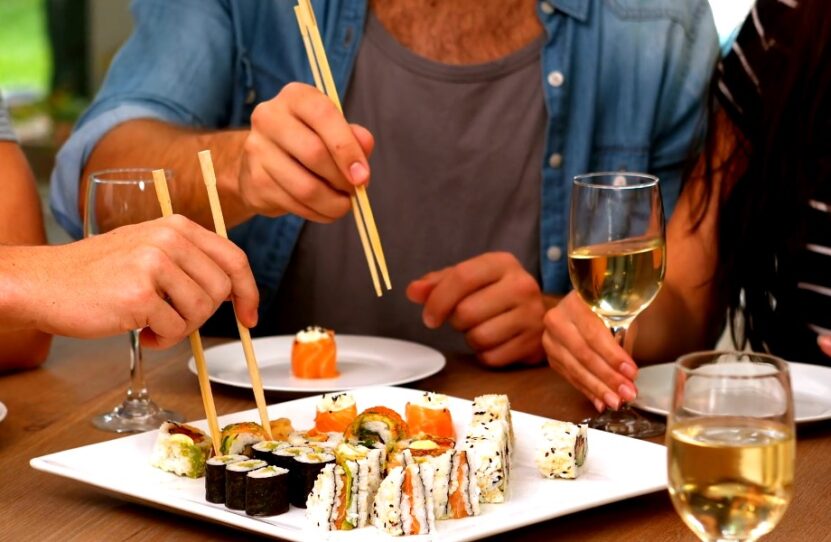
Despite the American origin of the California Roll, its influence has traveled far and wide. In Japan, it’s often referred to as “kashu-maki,” and it has paved the way for a whole new genre of “Western” or “California-style” sushi.
In contrast, the Alaska Roll might not have the same global recognition, but it has certainly made a name for itself among sushi enthusiasts. Its celebration of salmon resonates with many, making it a beloved option on many sushi menus.
Pairings and Preferences
To further enjoy these two delectable rolls, let’s dive into the realm of sushi pairing. It’s not just about the rolls themselves; it’s also about the whole dining experience. How you complement your sushi with other elements such as condiments, drinks, and even other dishes can significantly elevate your meal.
Soy Sauce and Wasabi:
The quintessential condiments for sushi are soy sauce and wasabi. A touch of soy sauce can enhance the sushi’s flavors, and a bit of wasabi adds a spicy kick that awakens the palate. While the California Roll can hold its own without much addition, the Alaska Roll truly shines when it gets a light dip in soy sauce. The saltiness complements the richness of the salmon, making every bite even more satisfying.
Pickled Ginger:
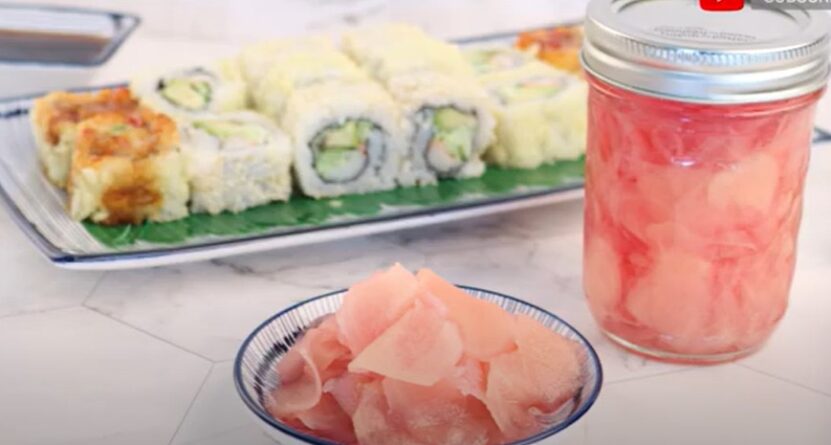
Known as “gari” in Japanese, pickled ginger serves as a palate cleanser between different types of sushi. It allows you to fully appreciate the unique flavors of each roll without them bleeding into each other.
Sake:
The quintessential Japanese rice wine, sake, makes a great companion for sushi. It can bring out the distinct flavors of the rolls and harmonize with them. For the creamy, mild California Roll, a light, fruity sake can be an excellent match. Meanwhile, the Alaska Roll can stand up to a more robust, full-bodied sake, which can balance the richness of the salmon.
DIY Sushi at Home
If you’re keen to take your sushi adventure a step further, why not try your hand at making sushi at home?
It may seem daunting at first, but sushi-making can be a fun and rewarding endeavor. Plus, it allows you to experiment with ingredients and make your own unique creations. The core ingredients for both the California Roll and Alaska Roll are readily available, and you’ll need a bamboo sushi mat to help with the rolling process.
Here’s a basic guide to get you started:
- Prepare the sushi rice: Rinse short-grain sushi rice until the water runs clear. Cook it according to the instructions, then mix it with a blend of rice vinegar, sugar, and salt while it’s still warm. Let it cool before using.
- Prepare the fillings: Slice your cucumber, avocado, and crab or salmon into thin, long strips.
- Assemble the roll: Place a sheet of nori onto the sushi mat, shiny side down. Wet your hands and spread a thin layer of sushi rice onto the nori, leaving a small margin at the top for sealing the roll. Lay your fillings in the center.
- Roll it up: Using the sushi mat, carefully roll the sushi, applying slight pressure to ensure it’s tight. Once rolled, use a sharp, wet knife to cut the roll into bite-sized pieces.
And there you have it – your very own homemade California or Alaska roll!
Conclusion
In the battle of California Roll vs Alaska Roll, it’s safe to say that there are no losers, only winners. In the end, it’s all about exploring new flavors, understanding the nuances of different ingredients, and, most importantly, enjoying every bite of these beautiful creations.
Feeling inspired? Why not try making both at home? It’s a fun and delicious way to appreciate these delightful rolls even more.

